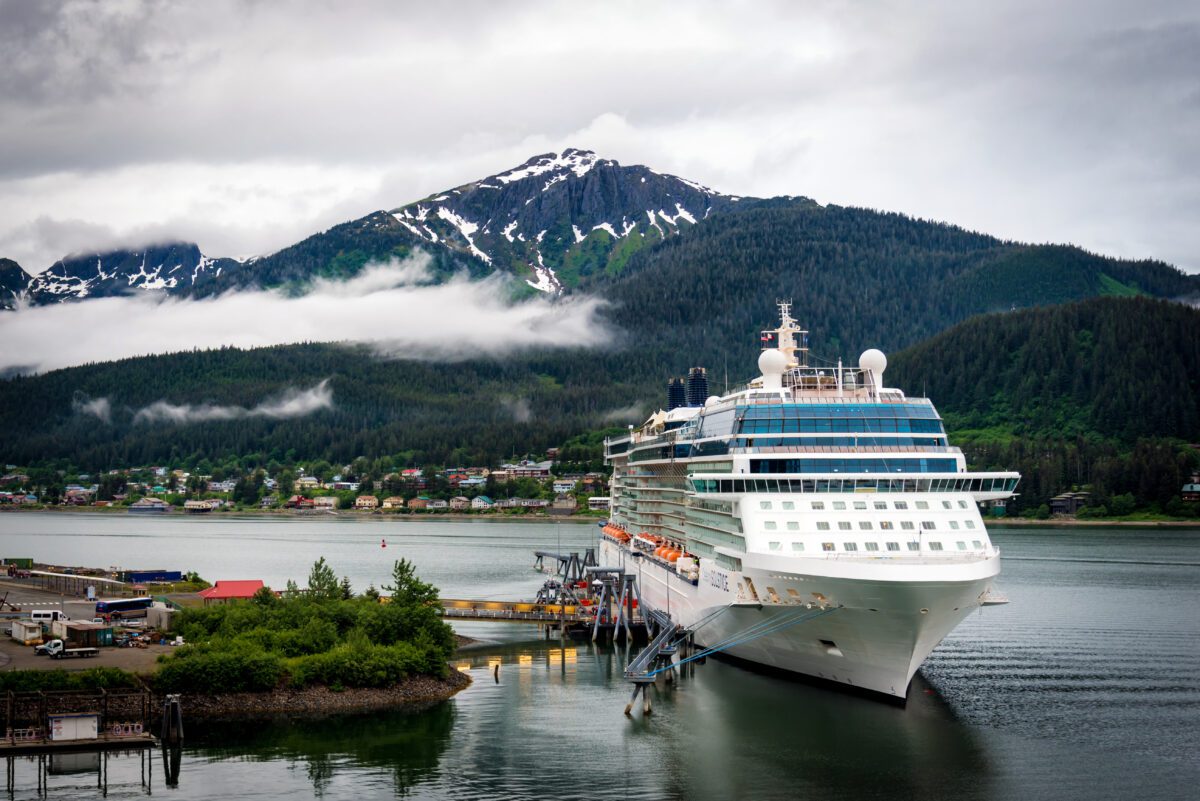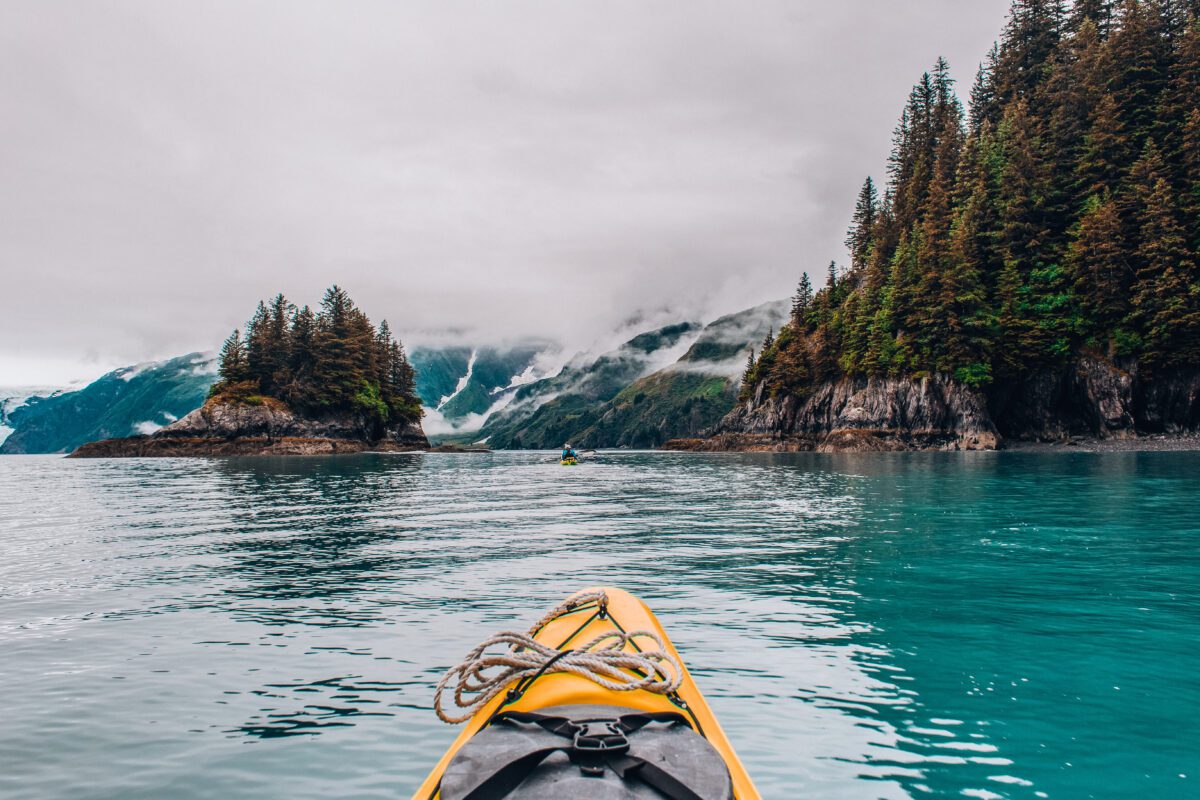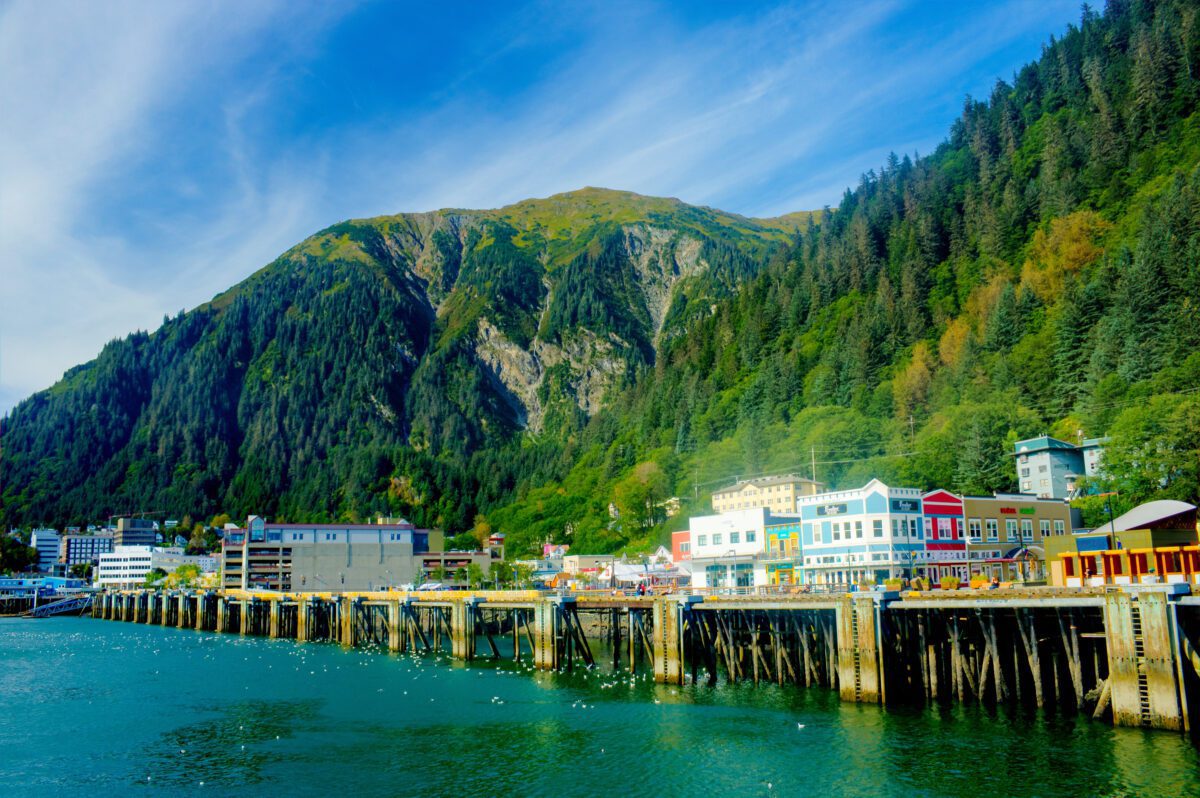This is a story about a guy named Joe, a tenacious French-Canadian prospector with a fondness for gold.
It was 1880 and Joe and his buddy were exploring uncharted territory in the south of Alaska, having just sailed into the area on the Inside Passage. They had no maps, but their instructions were simple: Follow the creek up into Last Chance Basin and go as far as you can. So they did.

And finally, there, at the head of the tributary, in the water along with the slate and quartz, they spied their prize – marble-sized nuggets of bright, glistening beautiful gold. Lots of it.
As you’ve guessed, Joe’s last name was Juneau. The men quickly staked out a town site, changed the name of the stream to Gold Creek and the rush was on. Wanderlust runs in the family. Joe grew up hearing tales of his cousin, Solomon Juneau, co-founder of Milwaukee.
East of Juneau, the terrain is so treacherous, there are no roads. Everything and everybody must come in by plane or by boat from the west. Alaska Airlines has multiple flights daily into Juneau International and the state’s ferry system runs year-round. You can “drive” to Juneau, but your trip will include catching a car ferry at either Skagway, Alaska, or Bellingham, Wash.
Being so far north, the average amount of daylight varies dramatically winter to summer, from 6.4 hours per day in December when daytime highs average 34 degrees, to 18.2 hours in June when highs top out in the low 60s.

The city becomes a handy base from which to explore what’s colloquially known as the Pacific Upper Left, a region rich with glacier-filled fjords like Glacier Bay National Park and Tracy Arm, plus wilderness areas such as the Tongass National Forest.
The Goldbelt Tram (aka the Mount Roberts Tramway) rises 1,800 feet from the cruise ship docks through a rainforest to restaurants, shops and Mountain House. Down below in the channel, the lined-up cruise ships look like bathtub toys.

The most notable of the hundreds of glaciers in the area is Mendenhall Glacier, an easy drive from downtown Juneau. The ice mass’s mountains of mesmerizing blue ice stretches for 13 miles, continually fed by the 1,500-square-mile Juneau ice field.
Hikers head for the visitors center on Mendenhall Lake, the trail head for paths running up both sides of the glacier, plus one to Nugget Falls that ends dramatically at the five-story waterfall.
Along the way, keep an eye out for bears, both black and brown, as well as moose and bald eagles. Whales, seals and porpoises thrive throughout the Inside Passage, which remains ice-free all year.
Tour operators do a brisk business, whether your passion is humpback whales, massive glaciers or hot fishing spots.
Back in town, there’s lots to learn about the culture and lasting legacy of the Tlingit, Juneau’s first people, about Russian colonization, and about Juneau’s 120-year tenure as Alaska’s capital. The Juneau-Douglas City Museum across from the capitol and the Alaska State Museum a half mile away tell all.
All over town, you’ll find a great diversity of local art: jewelry (especially jade), paintings, woodcuts, photography, sculpture, Christmas figurines, quilts, there’s even a cottage industry in comic book art.

It wouldn’t hurt to buy a Billiken and keep it close. Made of walrus ivory, the small carvings are thought to bring good luck. Among edible souvenirs, check out Alaskan birch syrup, reindeer sausage and wild salmonberry jam.
Bypass the cruise ship crowds by visiting in low or shoulder season. During the summer months, as many as five or six ships arrive in town daily.
Kick back at BW Grandma’s Feather Bed, a quirky Victorian farmhouse turned country inn, up toward Mendenhall Glacier among the pines.






















